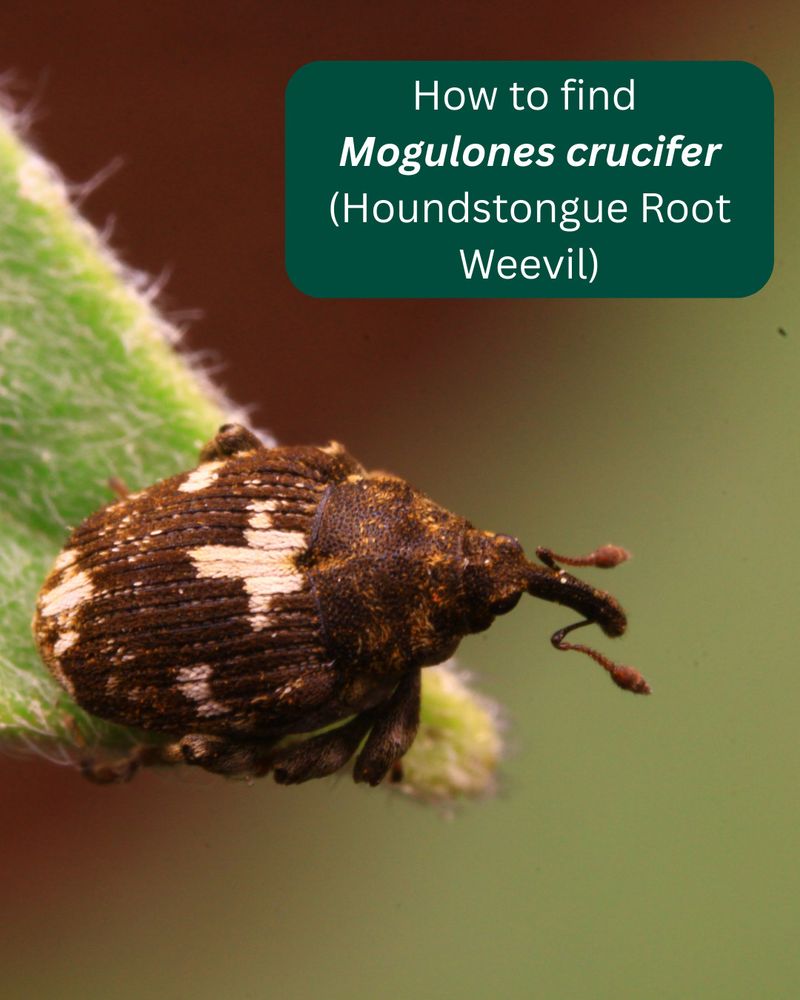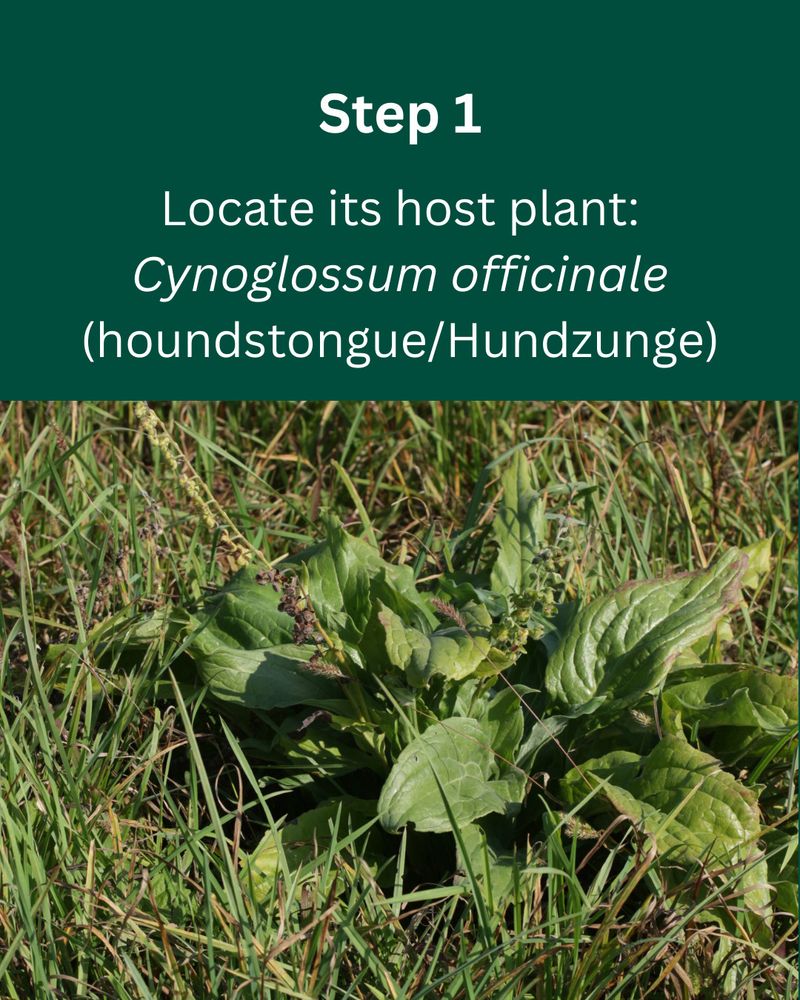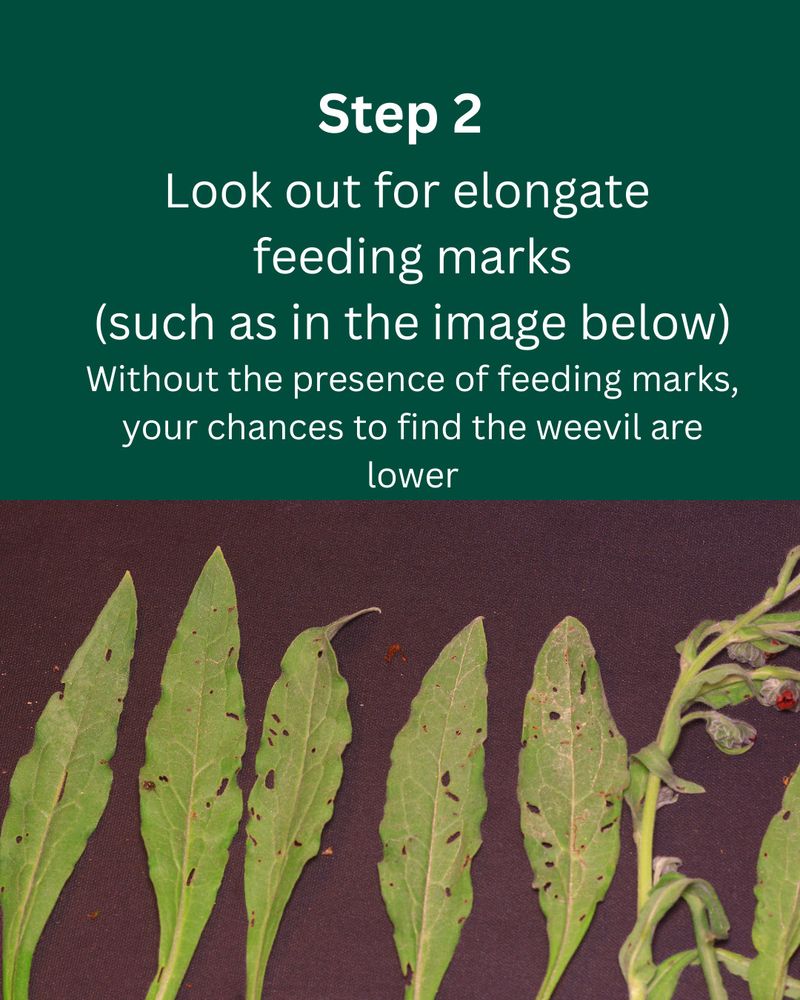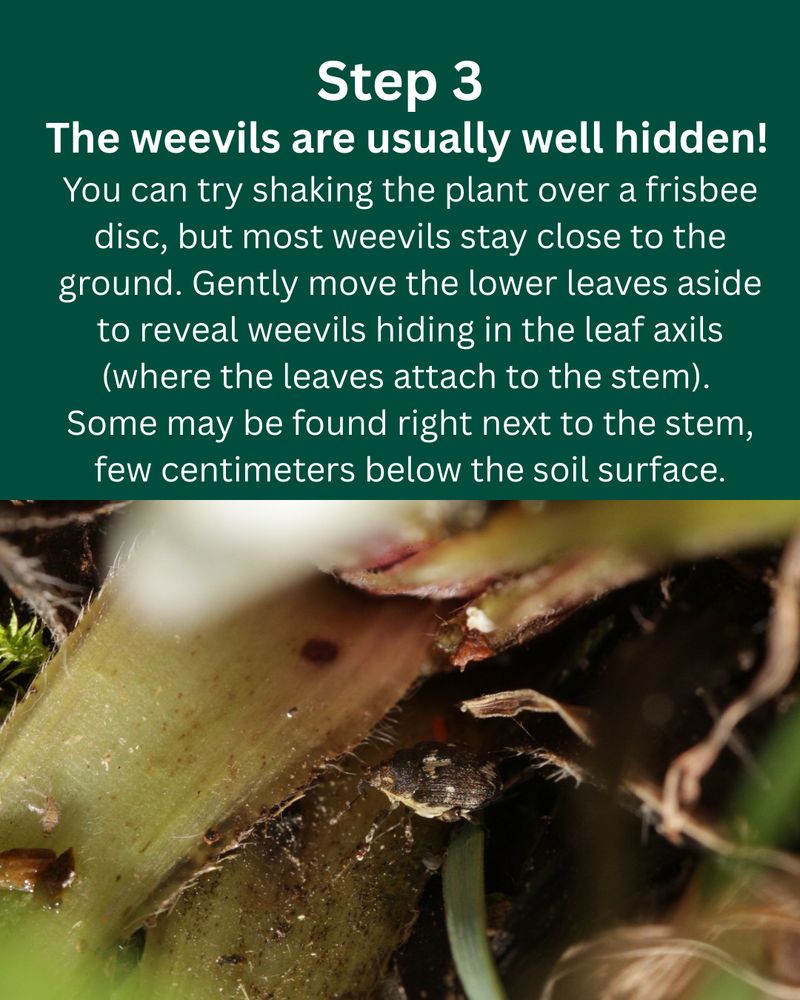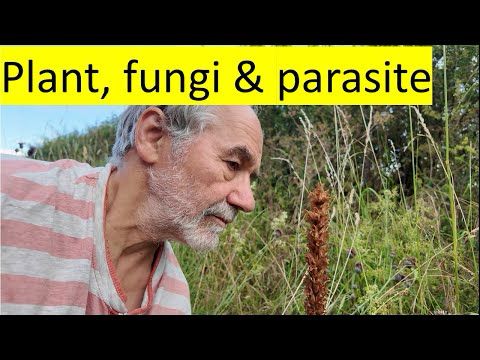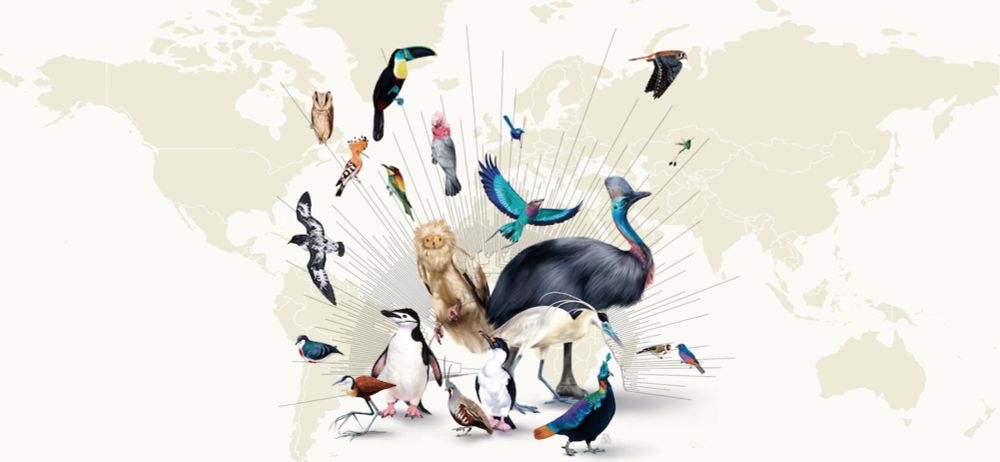
Photo montage of Tinamus resonans sp. nov., a new species of tinamou from the montane forests of the Serra do Divisor, western Amazonia, Brazil. The species is distinguished by a unique combination of plumage pattern, vocal repertoire, and ecological characteristics, including a conspicuous dark slate facial mask, vivid rufous-cinnamon underparts, and a uniform brownish-gray back. Its vocalizations are remarkable, consisting of long and powerful songs that echo strikingly across the steep montane slopes, producing a characteristic resonant effect. The species was documented exclusively at higher elevations within a transitional zone between submontane and stunted forests, where the understory is densely structured by root mats. A preliminary population estimate, based on field detections and spatial extrapolation, suggests approximately 2,106 individuals restricted to the Serra do Divisor massif. Although no immediate anthropogenic pressures were observed within its range, the species may be highly vulnerable to climate change and to proposed infrastructure projects that threaten the integrity of this federally protected region. The discovery of T. resonans highlights the biological uniqueness of the Serra do Divisor, reinforces its status as a center of montane endemism, and underscores the critical importance of maintaining its long-term conservation.
Huge News from the Western Amazon: it's the year 2025 and we are still describing entirely new, strikingly-distinctive large-bodied bird species! Behold Tinamus resonans sp. nov. the Slaty-masked Tinamou mapress.com/zt/article/v... #Ornithology @tetzoo.bsky.social 🪶
02.12.2025 07:20 — 👍 304 🔁 94 💬 9 📌 13

EARLY VIEW in IBIS
A new species of jewel-babbler (Cinclosomatidae: Ptilorrhoa) from the Southern Fold Mountains of Papua New Guinea | onlinelibrary.wiley....
Iain A. Woxvold, Banak G. Gamui, Leo Legra, Samson Yama, Bonny Koane, Salape Tulai | #ornithology 🪶
28.11.2025 07:59 — 👍 22 🔁 7 💬 0 📌 3


🦢 What a swan’s 570km U-turn could tell us about water, wetlands, and a changing climate.... www.linkedin.com/posts/kane-b...
05.11.2025 21:03 — 👍 33 🔁 8 💬 6 📌 5
Might be good for plant spp. richness, but I'm not sure mowing field margins every 6 weeks in spring & summer is going to be helpful for other farmland biodiversity. Seems a perfect way to repeatedly destroy every breeding attempt of ground-nesting birds, small mammals or butterflies that use them.
05.11.2025 18:47 — 👍 23 🔁 3 💬 0 📌 0

Illustrations of five identical looking small black weevils next to their dissected aedeagus. There are also illustrations of three dissected aedeagi, none of which is an exact match for the illustrations of the five species.
From the paper, the four British species plus betulae, which might be here too. I've added the aedeagus from three specimens I have. My two from willows look like they might be crypticus. The one from hawthorn looks like to me like subaeneus, but the weevil is not metallic so must be oxyacanthae.
03.11.2025 13:10 — 👍 8 🔁 1 💬 0 📌 0

A tiny black weevil with its head ticked under its head and large eyes on the top of the head. The antennae look like they come out in the front of the eyes. It is a Rhamphus flea weevil, but we do not know which species. They are cute but difficult.
Exciting news: we have a new British flea weevil.
Less exciting news: it is a Rhamphus.
I still don't understand how to tell them all apart.
Even so, this is a very useful paper:
www.mdpi.com/2075-4450/16...
Six new Palaearctic species and a review of diagnostic characters. #coleoptera
03.11.2025 13:10 — 👍 24 🔁 4 💬 2 📌 0

Large citizen science datasets are powerful tools for biodiversity science, but they may have biases. Nice new paper from @louisbackstrom.bsky.social et al. showing that for eBird and Birdtrack lists there is a tendency for rare species to be over-represented
onlinelibrary.wiley.com/doi/epdf/10....
13.10.2025 22:54 — 👍 131 🔁 43 💬 10 📌 4

One for the occasional series of #ornithology papers you need in your life but might not have read - Common/Spotted Sandpiper flight style as an antipredator behaviour.
academic.oup.com/auk/article-...
06.10.2025 12:09 — 👍 40 🔁 8 💬 4 📌 1

A middle-aged man with a bald head sits in front of bookshelves filled with scientific and academic texts in what appears to be a home office or study. He's wearing a dark grey jumper and has a slight smile whilst looking directly at the camera.
Can species reintroductions harm biodiversity rather than help it? Are we using reintroductions as a distraction from the real drivers of our nature crisis? Listen to my conversation with the one and only @alexanderlees.bsky.social 🌍🦤🧪🪶
➡️ pod.fo/e/32fae6
23.09.2025 06:52 — 👍 12 🔁 4 💬 0 📌 1

An Intergeneric Hybrid Between Historically Isolated Temperate and Tropical Jays Following Recent Range Expansion | doi.org/10.1002/ece3... | Ecology and Evolution | #ornithology 🪶
12.09.2025 05:00 — 👍 190 🔁 58 💬 3 📌 11
If you want to identify, well, anything, I recommend this post from @weevil-see.bsky.social. His choice of weevils to illustrate it is of course excellent, but it applies to everything from mushrooms to marsupials. This is how you can be a good identifier of things.
[Link contains spider]
02.09.2025 19:10 — 👍 27 🔁 10 💬 2 📌 1
YouTube video by owen reiser
LISTERS: A Glimpse Into Extreme Birdwatching
Top film. The smartest look at this subject I've ever seen. Also funny and sweary.
youtu.be/zl-wAqplQAo?...
25.08.2025 14:13 — 👍 17 🔁 5 💬 3 📌 3


At #EOU2025 @eounion.bsky.social conference next week, we'll show new evidence implicating forestry in declines of British Marsh Tits during the era of woodland conversion in 1950/60s-1980s.
This was period of steepest decline in Marsh Tits. Why? What was going on back then? #ornithology 1/5
16.08.2025 10:41 — 👍 65 🔁 28 💬 1 📌 3
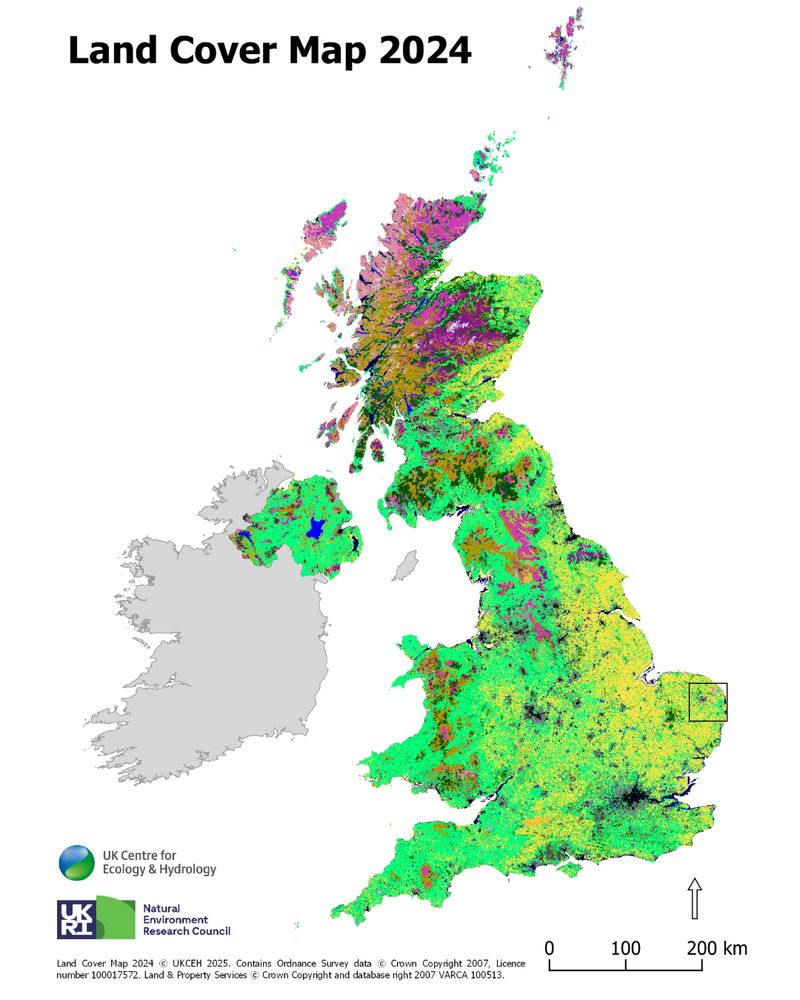
Map of UK and Ireland illustrating broad habitats in the UK and Northern Ireland as classified by the UKCEH Land Cover Map
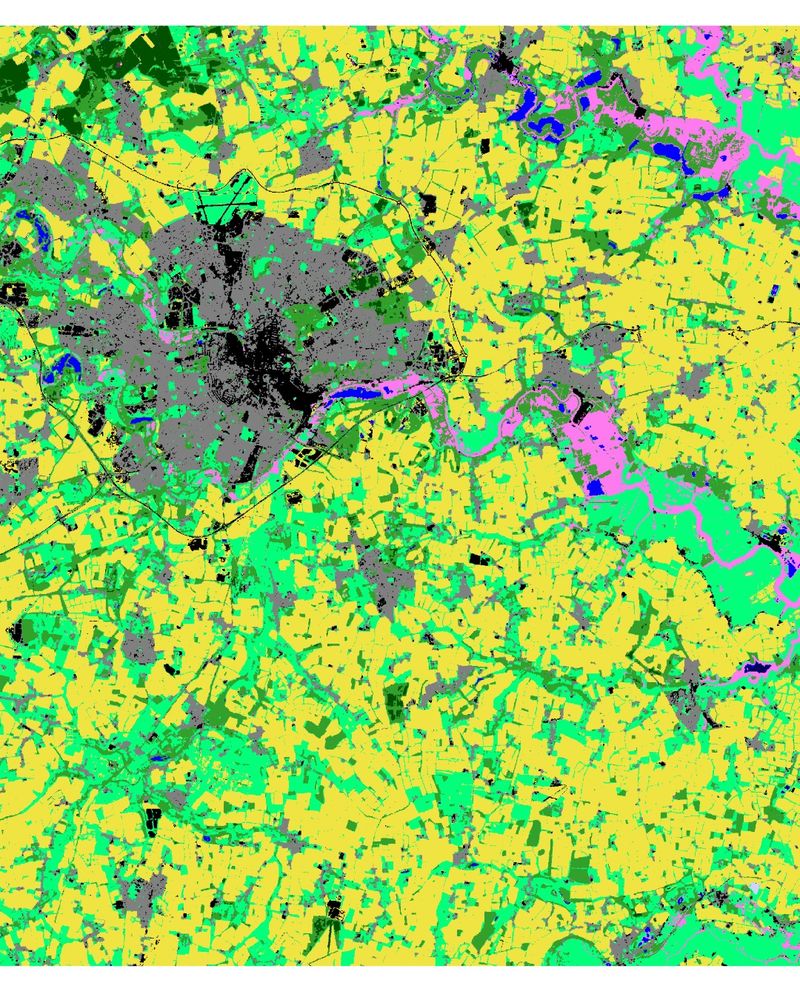
Broad habitats from the UKCEH Land Cover Map for an area around Norwich in England
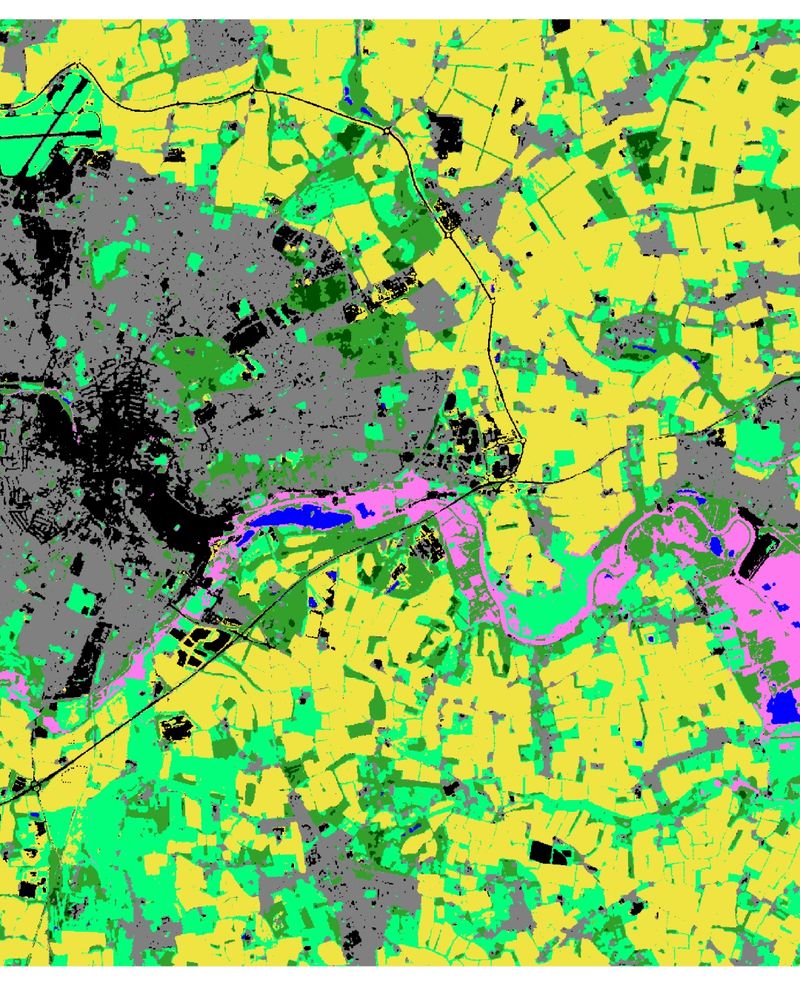
Broad habitats from the UKCEH Land Cover Map for an area more zoomed in around Norwich in England
NEW! The latest UKCEH Land Cover Map, describing the UK land surface in 2024, is now available 🏞️ 🌳
See what broad habitats—ranging from broadleaved woodland and arable land to freshwater and urban areas— there are and where in England, Wales, Scotland and Northern Ireland.
#LandCover #LCM
🧵🧪 1/
01.08.2025 09:54 — 👍 24 🔁 12 💬 2 📌 0
Also, white stork is doing very well on the continent (partly due to reintroductions), see fe breeding trend in the Netherlands ((c) @sovonvogels.bsky.social ). No doubt this population outbreak will spread to the UK. Better to use limited funding for conservation to species that really need it.
05.08.2025 10:48 — 👍 24 🔁 5 💬 0 📌 2
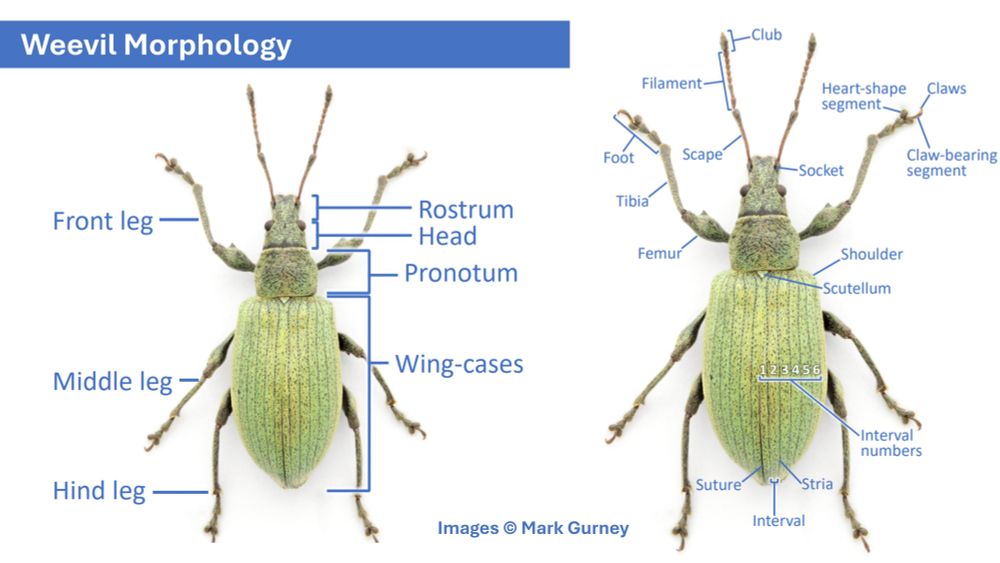
Most weevils have a snout, elbowed antennae & a heart-shaped foot—making them easy to recognise (with a few exceptions). 🪲
Learn more for free with @markgurn.bsky.social:
www.eventbrite.co.uk/e/1491232379...
#Weevils 🧪
@amentsoc.bsky.social @britentsoc.bsky.social @royentsoc.bsky.social
25.07.2025 09:35 — 👍 21 🔁 10 💬 0 📌 2
YouTube video by Bill Sutherland's Conservation Concepts
Host-specific broomrapes: the role of strigolactone cocktails
How do broomrapes find their hosts? How can they specialise on different hosts? Enter the astonishing world of strigolactones
. youtu.be/mUp9n_RW2eg?...
14.07.2025 06:46 — 👍 15 🔁 6 💬 0 📌 1
Absolutely incredible turnout for Budapest Pride! So proud of all the organizers, including some old friends, who estimate hundreds of thousands— major embarrassment to Orban
28.06.2025 17:23 — 👍 38737 🔁 8108 💬 506 📌 801

Front cover of the Field Mycology journal, with a photo of Chromocyphella muscicola by Peter R. Smith
The BMS's Field Mycology journal is now available to all on a new, open access online platform. Find out more, and visit the journal website to read the latest articles and access back issues here: www.britmycolsoc.org.uk/fm-journal.h...
12.06.2025 13:27 — 👍 11 🔁 4 💬 1 📌 2
It looks like Lasiorhynchites to me.
13.06.2025 20:47 — 👍 0 🔁 0 💬 1 📌 0
Yes, it is another Philopedon plagiatum.
30.05.2025 05:52 — 👍 1 🔁 0 💬 1 📌 0
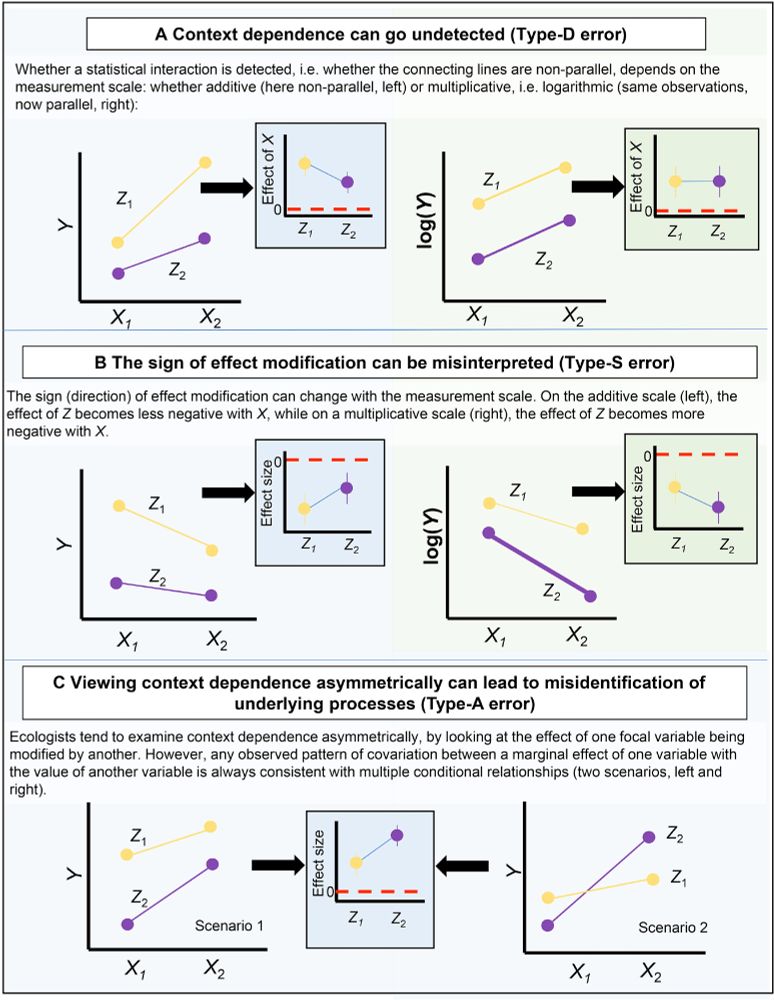
Three common inferential errors when investigating context dependence in ecology. Consider a test of context dependence in its most basic form: a 2 × 2 factorial experiment, measuring an ecological response Y, to the crossing of factors X and Z, each with two levels. The analyst fits a statistical model with an interaction term to the data: Y ~ X + Z + X × Z, to test for and quantify context dependence. Three inferential errors are possible when the measurement scale or symmetry of the interaction are overlooked: detection and magnitude (Type D), sign (Type S) and misidentification of underlying processes (Type A).
Since we are still talking about interactions, I worked with some ecologists a couple of years ago on measurement scale, interactions and interpretation issues. I think some problems arise from failure to distinguish prediction from inference, a chronic problem in ecology imo doi.org/10.1111/brv....
13.05.2025 07:08 — 👍 150 🔁 39 💬 1 📌 0
Curator of Herpetology & Associate Professor of Vertebrate Zoology at Natural History Museum of Denmark • ERC StG: GEMINI • Co-host of SquaMates Podcast and AnatomyInsights on Youtube • He/Him
🪰🐝Doctor of Insect Migration🦋🐞
🏴 Cofiwch y pethau bach
Conservation assistant at Buglife
⛰️Most content up a mountain
Naturalist, botanist and entomologist. He/him.
England Officer @bsbibotany.bsky.social views my own
Life-long passionate learner (and woeful photographer) of all things wild & wonderful!
I'm the Essex county VC18 and VC19 Coccinellidae and Heteroptera recorder. I especially love the juvenile stages.
Official Glaze project Bsky account.
Glaze/Nightshade @ University of Chicago
https://glaze.cs.uchicago.edu
https://webglaze.cs.uchicago.edu
https://nightshade.cs.uchicago.edu
A daily review of BOU/ BBRC accepted records of rare birds in Britain.
Most recent additions to the British List:
Species: BOOTED EAGLE - 641.
Subspecies: East Siberian Wagtail - 103.
Behavioural ecologist investigating the smell of birds | Animal behaviour | Chemical communication | Ornithology | https://marc-gilles.github.io/ | he/him
Illustrations inspired by nature and terrible puns!
Evolutionary biologist: speciation, adaptation, genomics, phylogeography of birds and lizards. Keen naturalist (birder, herper, entomologist, botanist and more), climber, cyclist, hiker.
Currently in Madrid, formerly France, Germany, Sweden & Cyprus.
Wildlife enthusiast, photographer, elms/lichens/beetles/molluscs/protozoa and much else. CEO of Wildlife Trust for Bedfordshire, Cambridgeshire, Northamptonshire, occasional leader for Wildlife Travel, visiting prof., Cranfield Uni. Views my own. He/him
Shining a spotlight on the importance of monitoring wildlife and ecological research, with a focus on the groups that get less attention. 🍄🪱🪲🕷️🐌🪼🦈
Posts by Keiron Derek Brown
Illustrator, science writer and a bit of a crazy rat lady. Paleontology, biodiversity, animal behaviour.
Entomologist (he/him) specializing in Curculionoidea ("weevils", "Rüsselkäfer")
Studying "Biodiversity & Ecosystem Health M.Sc."
📍 Frankfurt (Main) / Germany
https://www.instagram.com/weevil.see/
https://weevil-see.com/
We are a group of local campaigners for Cycling UK Stevenage. Read more about our work: https://www.cyclinguk.org/group/page/stevenage-cycle-campaigns-cycling-uk
Local Government ecologist, Hampshire, UK.
Essex + Wessex.
BSBI recorder, South Hampshire
A community that connects, supports, and promotes LGBTQ+ people in the R community and spreads awareness of LGBTQ+ issues through data-driven activism.
https://rainbowr.org
Posts by @ellakaye.co.uk and @oberman.bsky.social.
Ecology, conservation, statistics, reproducibility https://camargue.unibas.ch Retire statistical significance https://nature.com/articles/d41586-019-00857-9
eBirder; South Staffs/North Warks; triathlete; arachnology; ornithology; conservation; Alvecote Mill Pool
BAS Harvestmen Recording Scheme organiser/BAS press officer, invertebrate ecologist and overall bug nerd













